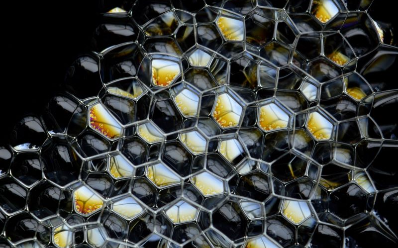Institut Charles Sadron News

Publié le 20/11/2024 par Drenckhan Wiebke
A group of scientists from the ICS (W. Drenckhan-Andreatta, F. Boulmedais, J. Farago) together with their partners from the University Du Mans (C. Chassenieux), Inserm (L. Ploux) and University Paris Cité (F. Bardault & A. Monari), has been selected to carry out one of the 12 CNRS projects in the framework of the new « Risky and High-Impact Research programme” or (RI)². Along with the CEA, Inrae, Inria, and Inserm, the CNRS is one of five research organisations to launch such a program as part of the “France 2030” strategy initiated by the government in January 2024. Goal of the “Risk program” is to detect in advance the fundamental or innovative research that can lead in the coming decades to conceptual, technological, or strategic breakthroughs in France.
Goal of the "CatFoam" project coordinated by the ICS will be to develop the scientific understanding necessary to create a new class of fully bio-based, architected fluids capable of catalysing chemical reactions. Unlike conventional fluids, architected fluids have an internal structure formed by different components. Classic examples include foams and emulsions, such as whipped cream or mayonnaise, where this structure arises from closely packed bubbles or droplets. This architecture grants these fluids with remarkable physical properties: they can behave either like a soft solid or a viscous liquid, depending on how they are manipulated. They can also adopt any shape, adhere to various surfaces, or absorb substances in a sponge-like manner. It is thanks to this wide range of properties that architected fluids are already used in many different applications.
The "CatFoam" project seeks to extend the utility of architected fluids even further by adding the innovative capability of catalysing chemical reactions. By incorporating specialized proteins known as enzymes, which can specifically cleave molecules, "CatFoam" will create architected fluids that can selectively capture, break down, and eliminate harmful substances. These novel fluids will be applied to address critical challenges, such as the removal of bacterial biofilms in healthcare, or the capture and degradation of (micro)plastics for environmental protection. The project is doted with 3 Million Euro for 5 years, provided that it is successfully evaluated after 2 years.